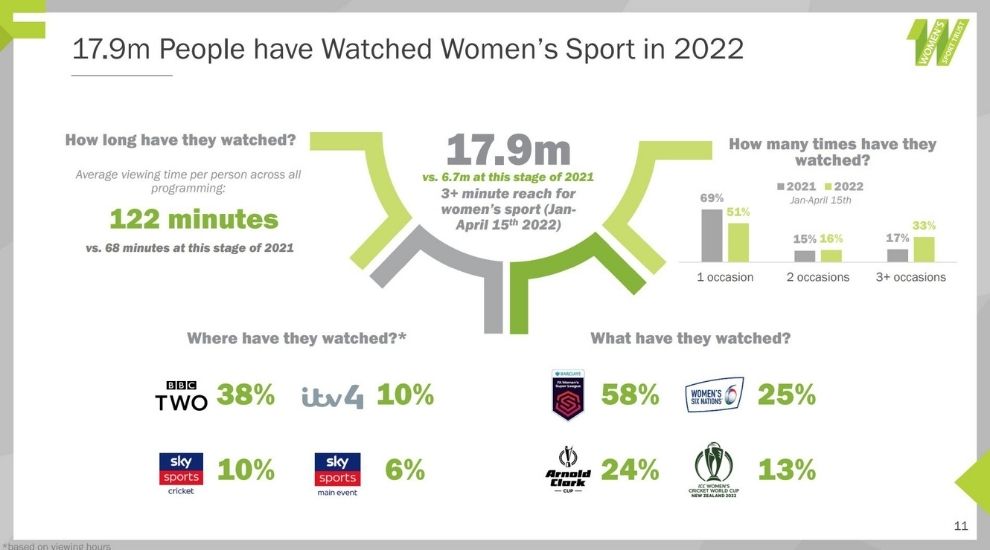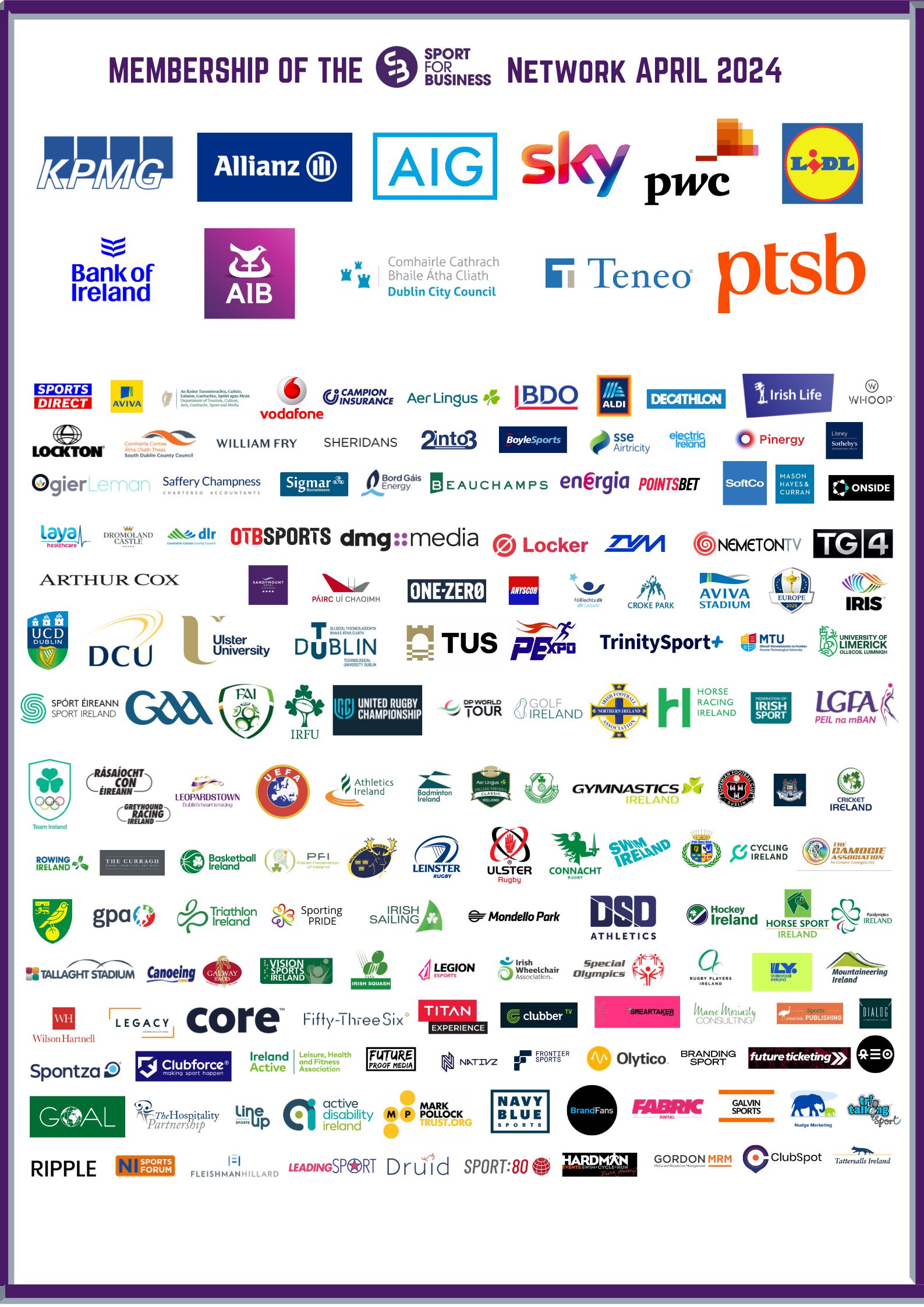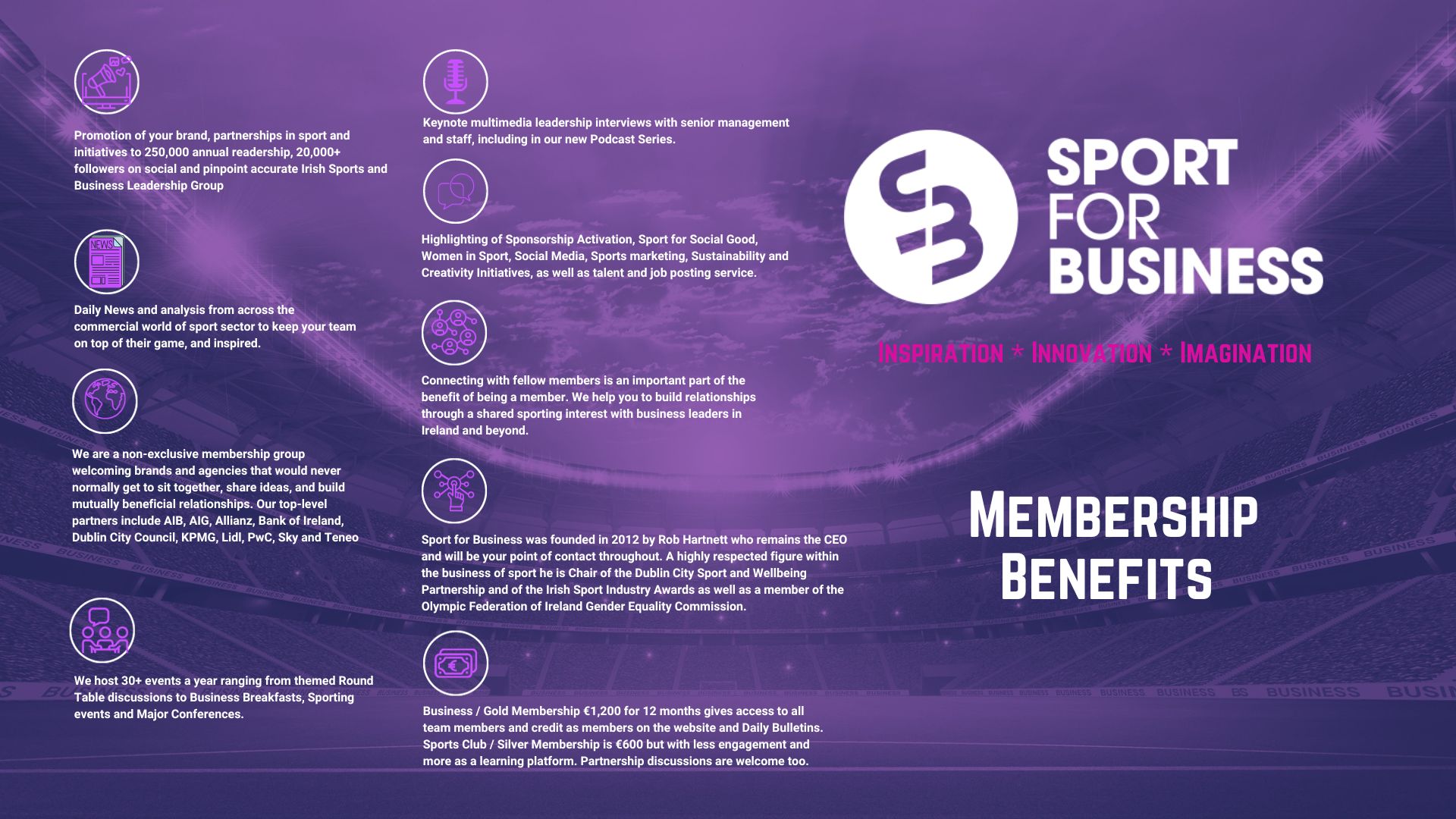Leading UK women’s sports charity, the Women’s Sport Trust (WST) has published audience research that shows the first three months of 2022 as being the most-watched Q1 for women’s sport on record in the UK.
15.1 million watched 3 minutes or more of women’s sports coverage during the period, in comparison to 5.06m in 2021 and a previous peak of 10.2 million in 2019.
The Women’s Sport Trust has actively monitored the UK’s consumption of women’s sport, men’s sport and mixed sports since publishing Closing the Visibility Gap – the most comprehensive study ever produced on the commercial drivers of women’s sport – at the start of last year.
Other highlights from the research, which considers the full period between 1st January-15th April 2022, include:
Demand for women’s sports is on the rise, with over 17.9m people watching women’s sports in Q1 (through April 15th) of 2022 vs. 6.7m at this stage of 2021. This takes in the additional first rounds of the TikTok Women’s Six Nations shown on Free to Air TV.
The research also confirms that women’s sport is not only increasing the quantity of viewers but also that they are tuning in for longer, with the average viewing time per person across all women’s programming being 122 minutes in comparison to 68 minutes at this stage of 2021.
57 per cent of viewers who have watched any women’s sport in 2022 so far also watched coverage in 2021, implying they are repeat viewers of women’s sport coverage.
33 per cent of viewers have tuned in on three occasions or more so far in 2022, in comparison to 17 per cent in the same period in 2021, suggesting an important growing habit of tuning into women’s sport.
The most-watched properties were the Barclays Women’s Super League (58 per cent), Women’s Six Nations (25 per cent), Arnold Clark Cup in international football (24 per cent) and the ICC Women’s Cricket World Cup (13 per cent).
Wouldn’t it be great to have similarly detailed data on the habits of the Irish viewing audience?
“These encouraging figures support our longstanding view that if women’s sport is made visible, then audiences will watch, and validates the commitment that UK broadcasters are making to unprecedented visibility of women’s sport,” said Tammy Parlour, CEO of the Women’s Sport Trust.
“The growing overall numbers for women’s sport, aligned to increasing habit, is particularly exciting for creating a commercially sustainable offering, particularly ahead of a huge year for women’s sport with the likes of the Women’s Euros, a Rugby World Cup for women, and the Women’s Rugby League World Cup still to come.”
“There has never been a better time for brands to consider investing in women’s sport for the first time.”
Full data from the first half of the year will be shared and debated by The Women’s Sport Trust in a public webinar in June.
Sport for Business Perspective
Decisions are best made on data as well as instinct. Proving that there is a demand for Women’s sport has always been a challenge as the overwhelming dominance of Men’s games has been hard to shift away from. The fact that both can be seen to co-exist gives an opportunity to broadcasters to increase output and provide a real point of difference to streaming services that are less advertiser-friendly.
Sport for Business Partners






































